The Renaissance affected change in every sphere of life, but perhaps one of its most enduring legacies are the letterforms it bequeathed to us. But their heritage reaches far beyond the Italian Renaissance to antiquity. In ancient Rome, the Republican and Imperial capitals were joined by rustic capitals, square capitals (Imperial Roman capitals written with a brush), uncials, and half-uncials, in addition to a more rapidly penned cursive for everyday use. From those uncial and half-uncial forms evolved a new formal book-hand practiced in France, that spread rapidly throughout medieval Europe.
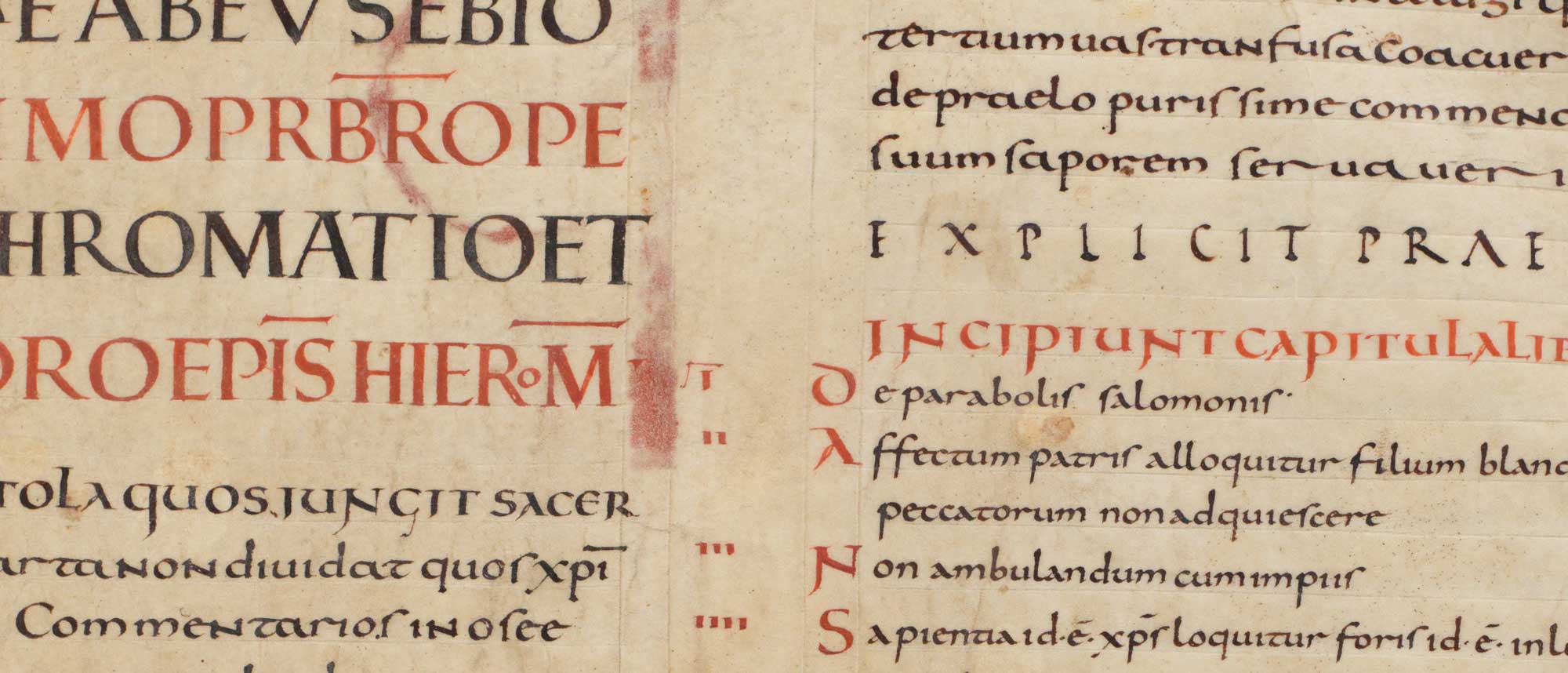
This Carolingian script flourished in the eighth and ninth centuries. However, from the beginning of the eleventh century, through to about 1225, the Caroline minuscule (accompanied by a form of uncial majuscule) evolved into a more angular and laterally compressed script. Not only were letterforms affected by this compression, but the letter-spacing too, so much so that letters begin to kiss, bite, and fuse. By the twelfth century, this gothic script, with numerous national and local variations, was fully developed and adopted throughout Europe. However, by the fourteenth century, changes were afoot. Humanists like Coluccio Salutati (1331–1406) and Poggio Bracciolini (1380–1459), among others, championed a new semi-gothic script that would thereafter evolve into the humanist book-hand.

In late medieval and early Renaissance Italy, the gothic script, as elsewhere in Europe, was the preeminent formal book-hand. However, the extreme angularity and compression of Northern Textura (or Textualis) was resisted in Italy, Spain, and Portugal. The southern European variant, rotunda or Southern Textualis, is characterized by rounder bows and broader letterforms.
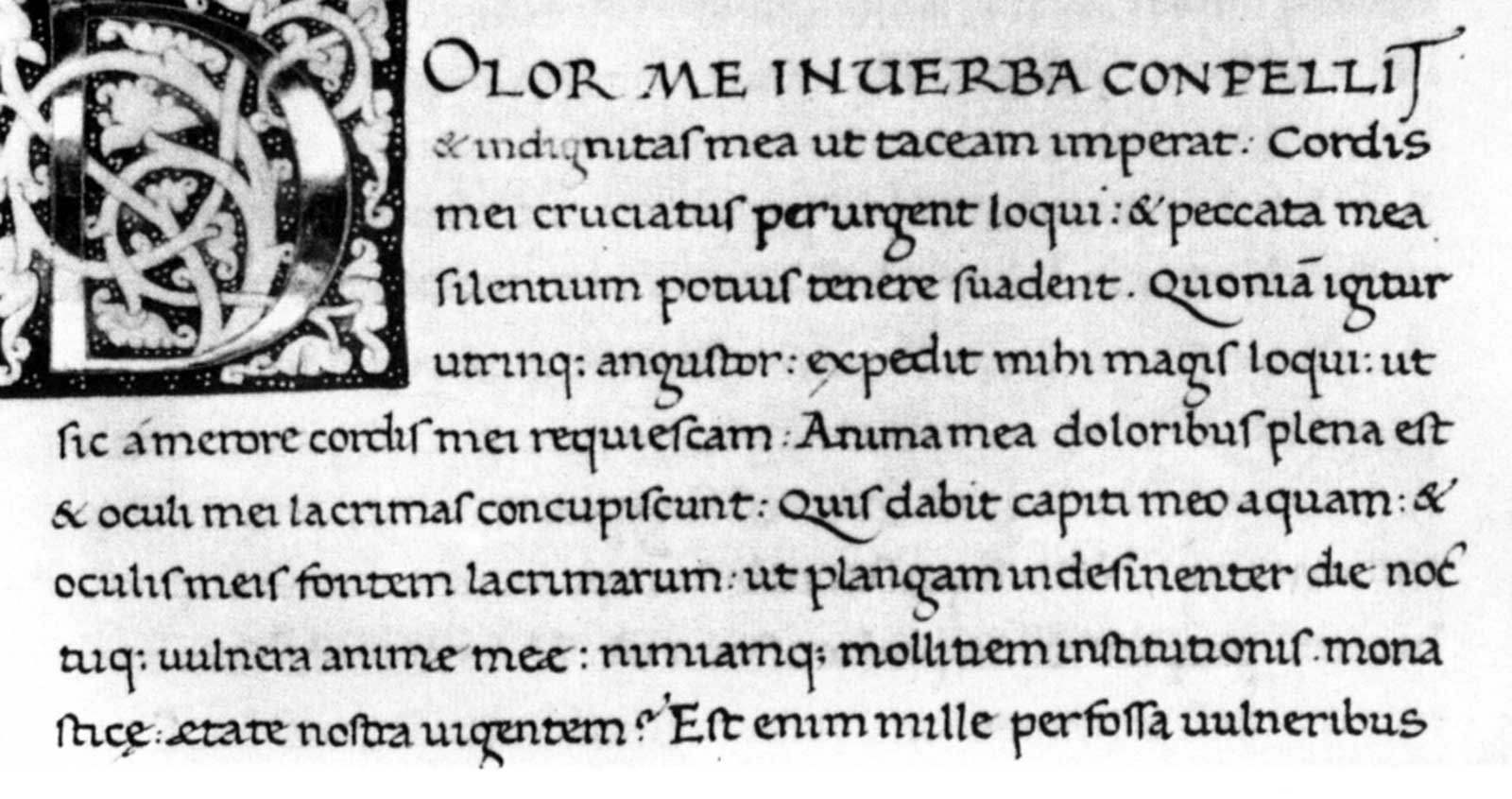
‘On Humanistic script’ – The Origin and Development of the Script of the Renaissance, Giulio Menna. [Academia]
The Origin and Development of Humanistic Script, B. L. Ullman, 1960
Thomas, D. (1951). What is the Origin of the Scrittura Humanistica? Bibliofilia, 53, pp. 1-10.
Davies, M. (2006). Humanism in Script and Print in the Fifteenth Century. In J. Krave, The Cambridge Companion to Renaissance Humanism, p. 210
The Palaeography of Gothic Manuscript Books: From the Twelfth to the Early Sixteenth Century, Albert Derolez, 2003
Humanism, a cultural and intellectual movement born in Florence, saw in antiquity a culture vastly superior to their own. Burckhardt describes the early Italian humanists as “mediators between their own age and a venerated antiquity.” (Burckhardt, p. 135). A great deal of their enthusiasm was aimed at restoring classical civilization, embodied in its literature. And so they scoured the earth for manuscripts, transcribed, translated, and copied them in earnest. Seeing that a great number of their venerated classical authors were penned in a script so contrasted to gothic, they mistakenly attributed the medieval Caroline minuscule to antiquity, hence the term ‘littera antica,’ or antique letters. By the time two dusty and tired German clerics arrived at the monastery of Subiaco in the quiet seclusion of the Sabine hills east of Rome, the humanist script was fully evolved, and already a natural choice for manuscripts books of classical literature.
[1] Sweynheym & Pannartz’s first colophon (Rome, 1467) states they are “comrades from the German nation.” Their petition of 1472 addressed to Pope Sixtus IV states unequivocally that they are from the dioceses of Mainz and Cologne: “…Conradus Sweynheym et Arnoldus Pannartz clerici Maguntine et Coloniensis diocesis…”, Scholderer (1996), p. 72. Papal records also corroborate this provenance: “…den päpstlichen Registern hervorgeht Pannartz als Inhaber einer Altarstelle am Dom von Köln, die er vertreten lassen konnte, Sweynheym als Inhaber einer Präbende an St. Viktor vor Mainz.” — Uwe Israel (2006), p. 284
[2] Some have suggested that perhaps the famed German cardinal, Nicholas of Cusa (1401–1464) was involved in their invitation to Subiaco. Although his secretary and protégé, Johannes Andreas de Bussi (1417–1475), wrote in one of his earliest prefaces for the Sweynheym & Pannarttz press, a dedication of St Jerome’s Letters to Pope Paul II, that Cusa wished to see printing, the ‘holy art’ brought to Italy, there is, beyond his evident enthusiasm for printing, no evidence of Cusa’s direct involvement. He died 11 August 1464, perhaps around the time Sweynheym and Pannartz arrived in Subiaco.
Sweynheym & Pannartz
proto romans
Printing had spread from Mainz in the mid-1450s to Strasbourg, Bamberg, Eltville, and Cologne. But despite the close economic and cultural ties between Germany and Italy, a decade would pass before typography breached the Alps. Not in Europe’s most cosmopolitan city, Venice, or even in Rome, but rather in the quiet sanctuary of the Benedictine monastery of Sancta Scholastica at Subiaco, some seventy kilometers east of the hustle and bustle of Rome. A century before, in 1364, Pope Urban V, dismayed by its “incorrigible monks,” ordered Abbot Bartholomew to dismiss them. Many of their replacements came from Germany, something that subsequently was to attract yet more German immigrants including two lower order clerics, Konrad Sweynheym and Arnold Pannartz. In fact, the two cleric-printers would likely have felt quite at home, surrounded as they were by so many of their countrymen. At the Subiaco monasteries, during the fourteenth and fifteenth centuries, Italian monks were outnumbered by foreigners. Of the approximately 280 monks recorded by name from 1360 to 1515, fewer than one third (83) were from Italy; 110 from Germany, 19 from France; with others from as far afield as Bohemia, Poland, Prussia, Hungary, Spain, and elsewhere north of the Alps. Sweynheym had perhaps been employed in Mainz with Peter Schoeffer, and Pannartz was from Cologne (not Prague1).
By 1464, or 1465 at the latest, Sweynheym and Pannartz had arrived in Subiaco. Perhaps they were invited by Juan Torquemada2 (1388–1468), the Abbot in commendum of the Subiaco monasteries, Santa Scholastica and Sacro Speco since 1455. They likely traveled light with a bare minimum of belongings, including their type or at the very least their type-making materials. They would not have had to lug a press across the Alps, as it was something that could easily have been constructed upon their arrival with the help of the Subiaco monks and any others that accompanied them on their journey from Germany. They began by printing 300 copies of a Latin Grammar by the fourth-century tutor of Jerome, the Roman Grammarian, Aelius Donatus, of which, unfortunately, no copy has survived. Their next edition, issued no later than September of 1465 is Cicero’s De oratore, and is thus Italy’s first dated and extant printed book. Thus begins Italy’s association with the printing press and with printed works of the classics.
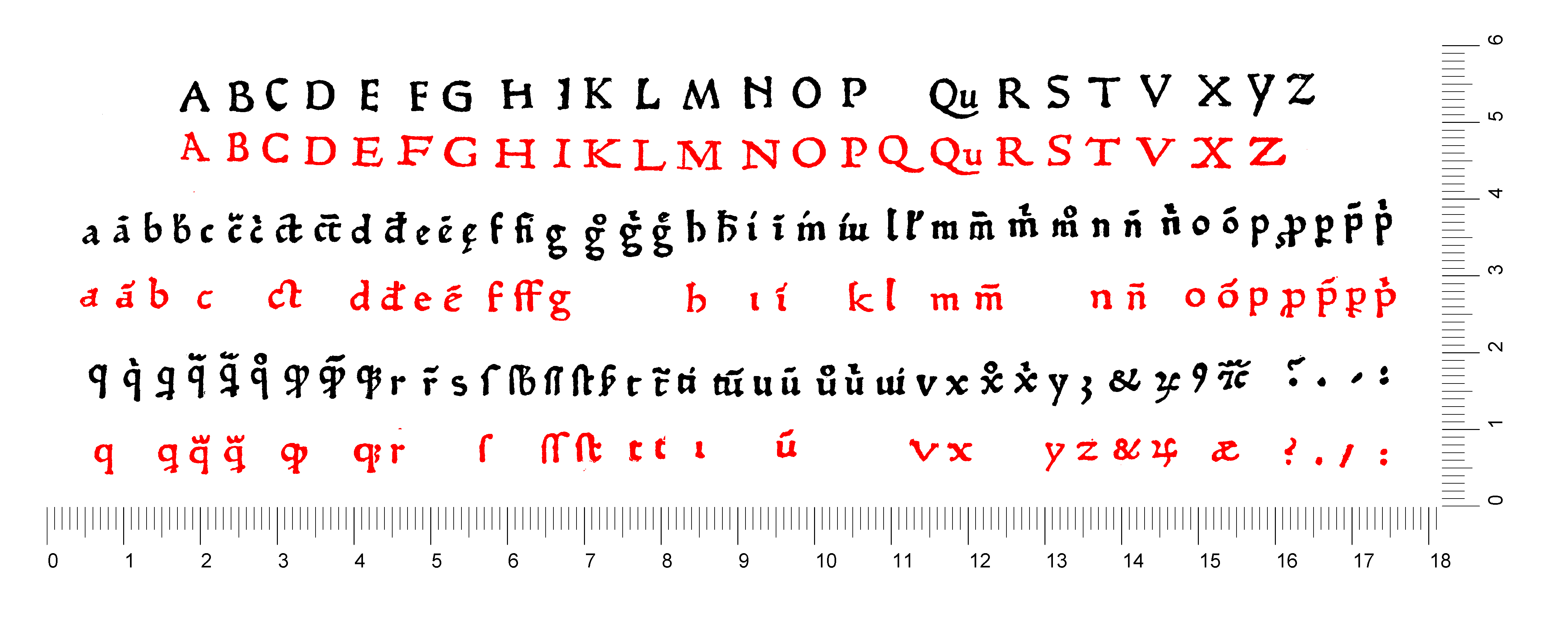
The First Roman Type
Just as the first printers in Germany looked to German manuscripts exemplars for their gothic textura types, so too, Sweynheym and Pannartz modeled their letterforms on contemporary Italian manuscript book-hands, humanistic scripts. There is no single exemplar, just as there is no singular humanistic script. It existed in many forms with local variations, further differentiated by the idiosyncrasies or unique characteristics of individual scribes, like Antonio di Mario and Giovanni de Stia.
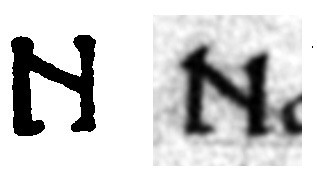
Left: N from the Subiaco type, 1465; right: script of Poggio Bracciolini, 1408
The capitals of the Subiaco type are clearly roman, though they are antique square capitals as interpreted by fifteenth-century scribes. A is relatively wide with no serif at the apex; H is among the most peculiar of the capitals, with its broken right stem. However, this form was not a fanciful creation of Sweynheym and Pannartz, but is to be found in early fifteenth-century specimens (See Hargreaves, p. 22n24). I has a spur protruding from the left-center of the stem. The diagonal stroke of N meets the right stem mid way – a form not uncommon in humanist scripts. In addition to long s (ſ), short s is included for word endings only.
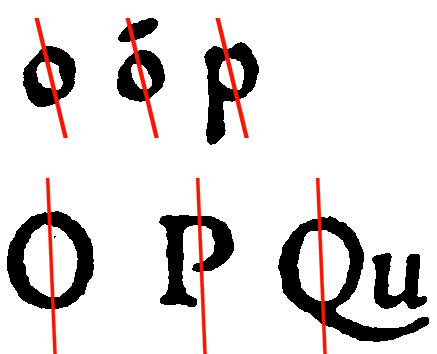
Subiaco type. Axes or stress in capitals and lowercase.
Furthermore, there is, and it was to be expected for a first effort, a lack of unity between the upper- and lowercase alphabets. For example, the stress or axis in the capitals is sometimes almost perpendicular, while in the lowercase it is oblique. Serif treatment is rather haphazard. As Morison notes, [Morison, The Library, p. 21] the type includes several sorts of d, l, and m – concessions to calligraphic variation.
Overall, there is little contrast in the letterforms. The principal difference between the lowercase of the Subiaco roman and contemporary humanistic scripts is how narrow many of the lowercase letters are cut. This feature, combined with tight spacing makes for a relatively dark color.
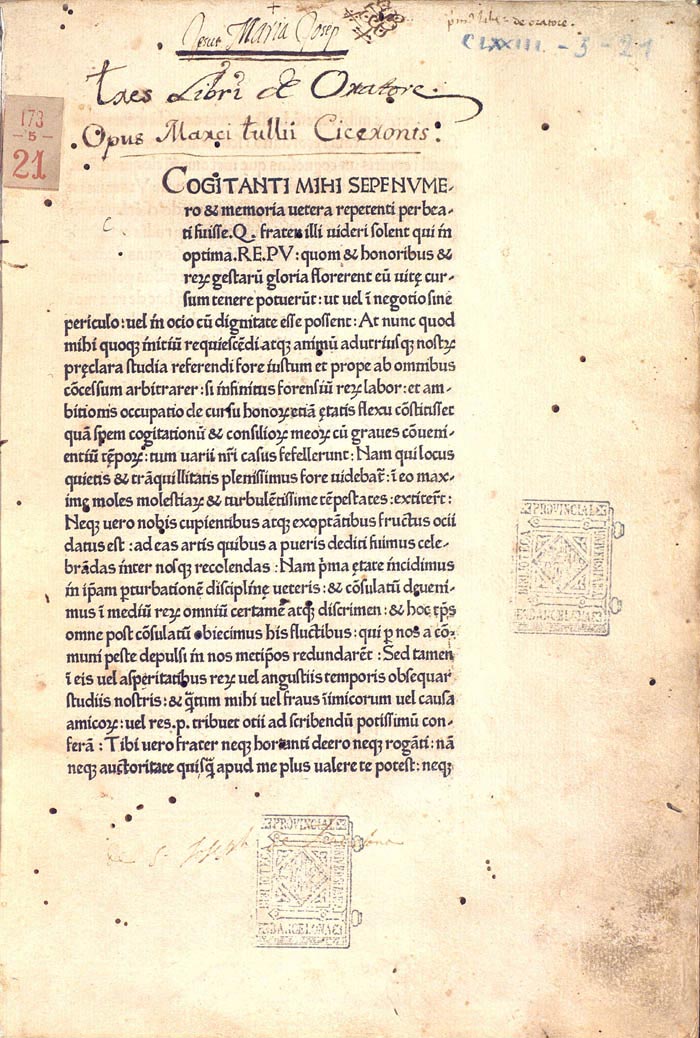
A large number of the books printed by Sweynheym and Pannartz made their way to Rome, with sixty copies, almost a quarter of the print run of their De civitate dei, their final Subiaco imprint, shipping to Rome, (Füssel, p. 60) though as Edwin Hall suggests, those books might have been allotted to the monks as remuneration for their help in running the press. That there was no local market for their books likely precipitated their move to Rome in 1467.
It is somewhat peculiar that the Benedictine monks did not continue with their own press. Four years after Sweynheym and Pannartz left for Rome, Benedictus de Bavaria (Benedikt Zwink), a monk at Sacra Speco, a monastery just above Santa Scolastica, wrote to Laurentius, the abbot of the Benedictine abbey of Göttweig in Austria, offering to print a breviary, but there is no evidence that Subiaco produced a single title after the departure of the prototypographers.
“We have all the equipment for printing and also the people who know how to use it. If we could form part of this religious union (the extended congregation), all books, whatever the number required, could be printed and distributed to all the monasteries which in their turn would have joined the congregation, with the equipment which is available on the spot, and with the help of five brethren who could be instructed in this technique…”
The letter also suggests that they could print 200 copies. Even a leaf from Sweynheym and Pannartz’s edition of De civitate dei was enclosed with the letter, as an example of the type they would use. The Subiaco roman type was never again used by Sweynheym and Pannartz, suggesting that the Subiaco monks were heirs to their type and type-making equipment.
Lotte Hellinga wryly concludes that “other duties, such as weeding the garden, must have taken up too much time.” However, it is clear that the monks were intimately involved in the Subiaco press, and that they did “more than provide an empty barn and a wine press.”
Romans in Rome
While popes and antipopes played theocratic tug of war between Avignon and Rome during the Great Schism that straddled the fourteenth and fifteenth centuries, Rome, neglected, fell into disrepair, and its citizens scattered. When the Schism was finally resolved at the Council of Constance, the newly elected pope Martin V set about restoring Rome. He encouraged immigration and in response a sizeable contingent of Germans settled in the city. At the center of the German neighborhood stood their church, St. Maria dell’ Anima. Sweynheym and Pannartz would no doubt have felt quite at home with their print-shop close to Campo de’ Fiori, just a few minute’s walk from the Anima. With their newly established Roman press, they produced a new roman type.
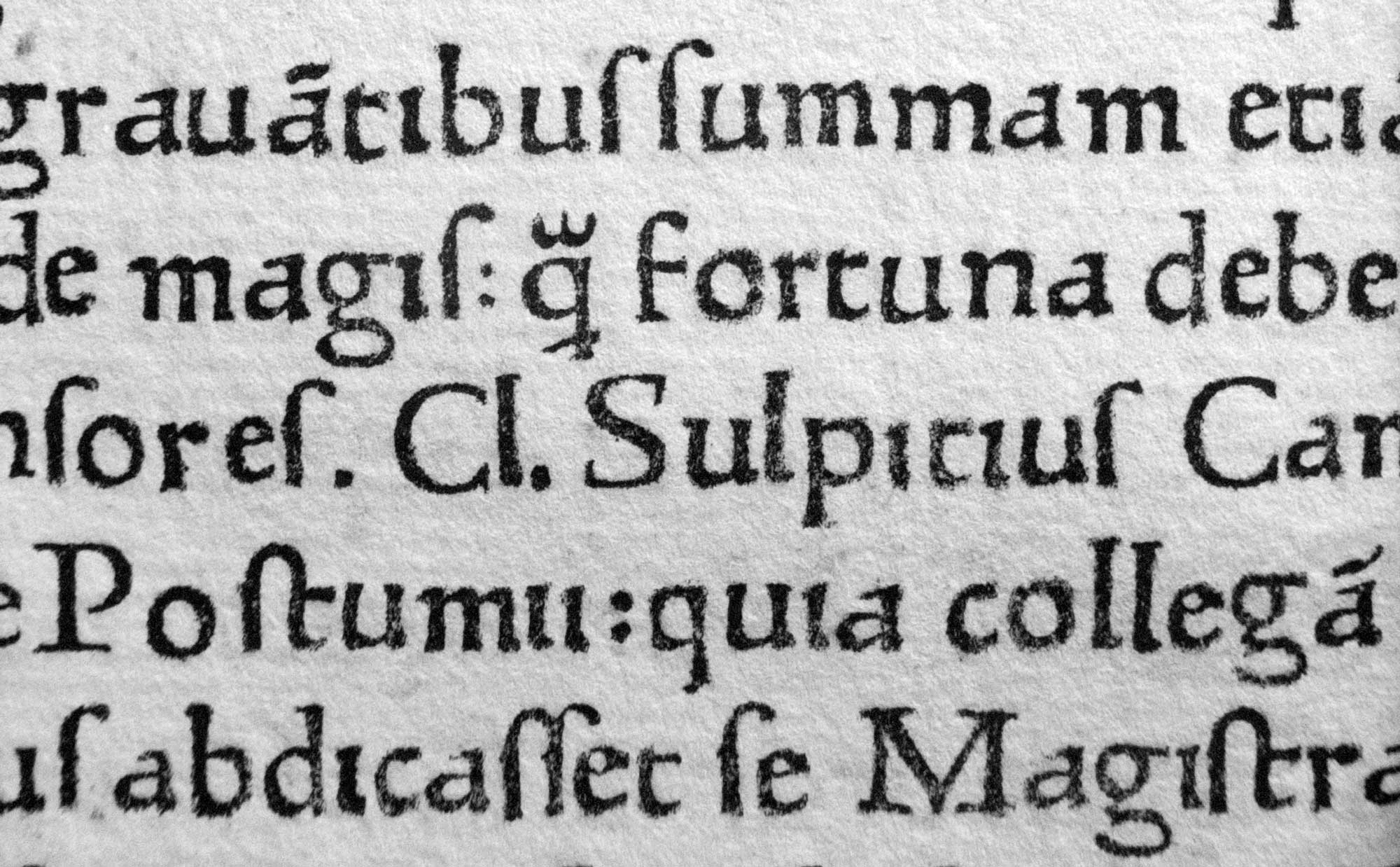
This second roman differs in a number of respects. The approach to serifs is rather more consistent. A number of the capitals are wider: most notably E, F, and K. In the lowercase, most letters are wider, including e which takes on the nib or extended crossbar. Moreover, bowls are rounder – these ingredients make the Sweynheym and Pannartz’s second roman lighter in color.
Though famous for introducing the typographic book and roman type to Italy, it appears that Sweynheym and Pannartz were not the most business-minded of men. By 1472 they were on the verge of bankruptcy, and their editor, Giovanni Andrea Bussi, petitioned the Pope for relief. The petition lists, in chronological order, their editions and respective print runs (totaling an impressive 12,475 volumes), including their Subiaco imprints.
Sweynheym and Pannartz’s petition, printed in the preface to the fifth volume of their edition of Nicolaus de Lyra’s Postilla super totam Bibliam, is a rather desperate sounding plea:
“We first among the Germans brought the printing art to Rome, at great labor and expense. We battled against difficulties which others refused to meet, and as a result our money was spent, and our house is full of unsold quires, but empty of the means of subsistence. Broken in strength we implore your gracious help, in return for which we will gladly give you as many copies of our handiwork as you choose to have.”
And, Bussi, writing on their behalf, makes very specific demands:
“Your devoted petitioners Conrad Sweynheym and Arnold Pannartz, clerics of the dioceses of Mainz and Cologne, book printers at the house of the Massimo family, beg Your Holiness to concede them two canonries in two cathedrals…”
It was once assumed that their petition had fallen on deaf ears, but a document discovered by Schlecht, in a volume of miscellaneous petitions presented to Pope Sixtus IV from August 1471 to August 1472, reveals that their petition did indeed meet with a favorable response, no doubt owing to the influence of their editor, Giovanni Andrea Bussi, who had recently been appointed chief librarian of the recently re-founded Vatican library. If any one title is responsible for Sweynheym and Pannartz’s desperate financial situation, then it is Nicolaus de Lyra’s Postilla, a five-volume folio work of 1,832 leaves, one the biggest of the fifteenth century (Hall, Edwin, pp. 7 & 15).
Conversely, Ulrich Han, invited to Rome by Torquemada, fared very differently. But why was Ulrich Han to flourish where Sweynheym and Pannartz failed? The answer to their contrasting fortunes lies in their books, in what they chose to print. Sweynheym and Pannartz almost exclusively produced the works of Classical authors; and they never printed with gothic types; in fact, they appear not to have owned a single gothic font. And despite the good graces of the rich and influential Massimo family, and the benefices of the Pope, they printed fewer and sold far fewer books than Ulrich Han. Even after their petition of 1472, when it might have occurred to Sweynheym and Pannartz that, perhaps, their choice of titles to print was the source of their financial woes; and surrounded by mountains of unsold inventory, they did not think to print different genres and authors.


That the newly appointed cardinal Torquemada, who had likely invited Sweynheym and Pannartz to Subiaco, did not seek their services for printing his Meditationes, (31 Dec. 1467) is rather puzzling. Torquemada’s book was illustrated with 33 woodcuts, something that Sweynheym and Pannartz never employed, save for a brief experiment with woodcut initials in 1470; and, apparently, those were printed, not with the text, but separately stamped by hand. T.F. Dibdin wryly suggests that Sweynheym and Pannartz had “sworn off decoration.” (The Bibliographical Decameron, 1817) Perhaps that’s not such a far-fetched notion. For indeed, their publishing program – almost exclusively the Classics set in roman –, even in the face of acute financial hardship, says something, perhaps, of either their principled aesthetic or obduracy. Another remark by their editor, Bussi, perhaps speaks to the limits of their typographic abilities, when he remarks in the preface to the first edition of Aulus Gellius‘ Noctes Atticae (1469), that the printers were unable to print marginal commentary. (Edwin Hall, p. 62)
Why was Ulrich Han able to succeed where Sweynheym and Pannartz failed? While Sweynheym and Pannartz enjoyed the palatial residence of the Massimo brothers, and an important association with Bussi, they continued to publish editions that they struggled to sell, Ulrich Han had not only found the good favor of Cardinal Torquemada, but too he had partnered with Chardella who, though not a printer himself, evidently understood the market for books. Prior to 1471, Han had mostly printed classical texts (Cicero, Livy, Juvenal, Plutarch, et al.), but his partner, Chardella, suggested he publish, not the classics, but books on canon law (it was Rome, after all!). Besides books on canon law this new partnership produced books like the liturgical treatise Rationale divinorum officiorum by the thirteenth-century Bishop and canonist Guillaume Durand (the uncle, not the lesser-known nephew by the same name). Prior to 1470 we see just two religious titles versus eight in the classics; by 1473, just one classic, Virgil’s Opera, and seven religious (including canon law). In the same year, four editions of the classics and not a single religious work issue from the press of Sweynheym and Pannartz. However, though Ulrich Han was on the whole successful, it appears that he, like so many fifteenth-century printers, was never far from financial insolvency. In 1476, Han, unable to pay his back rent of 40 ducats, offered a book in lieu of payment, that his landlords, the brotherhood of the Anima, sold – for only three ducats. (Maas, p. 125) How he paid the difference, we do not know, but he did continue printing until about 1480, with a total of some 100 editions to his name. Owing to the huge investments in capital required to print hundreds of books, a single misstep could spell disaster. The most successful printers were the most flexible, and those who were best at reading the market. We should not conflate the romanticism of the Private Press movement with incunabula printers, most of whom were just one book away from financial ruin. Georg Lauer, in Rome, at the insistence of his editor, Pomponius Laetus, successfully shifted his attention from classical editions to legal texts and pamphlets for the papal court. Incidentally, Lauer, in 1479, was working with Sweynheym and Pannartz’s second roman type. Adam Rot, printing in Rome from 1471, was able to corner the market for guides to Rome, including his edition of Mirabilia Romae, (‘Wonderful Rome’) catering to the city’s hundreds of thousands of tourists and pilgrims.
Within just fourteen months of their petition, Sweynheym and Pannartz’s partnership comes to an end. Their Historia naturalis, another classical text, published in May 1473, is the last work they publish in partnership. Pannartz continued printing alone in the same workshop housed in the Palace of the Massimo brothers, Pietro and Francisco, until 1476. He died some time before 1478. Sweynheym devoted himself to making copper-engraved maps, including those for Ptolemy’s Cosmographia, but died (c. 1477) before completing them. The book was completed by a fellow German printer, Arnoldus Buckinck on October 10, 1478 (ISTC: ip01083000), a folio replete with woodcuts and twenty-seven magnificent copper-engraved maps. The preface is addressed to Sixtus IV, the very Pope who had granted benefices to Sweynheym and Pannartz a little over five years before.
Many histories of nascent print imply, that upon its introduction, roman type quickly became ubiquitous. However, it is worth noting that, although the roman is an Italian development, its use in Italy, at least in the fifteenth century, was not as widespread as is often suggested. One hundred and thirty-eight fifteenth-century Italian presses appear not to have used any roman types. (Hirsch, p. 115) Nine per cent of European incunabula were classical texts; for Italy that figure rises to just over 30%, and as almost all of those were set in roman type, then close to a third of all Italian incunable were set with roman types – still far out-numbered by books printed with gothic types. And in German-speaking nations, various forms of blackletter or gothic types continued to dominate well beyond the Renaissance.
The early history of roman type is confused by terms like semi-gothic and semi-roman. Daniel Updike employs “pure roman” or “transitional roman” to distinguish the romans of, for example, the da Spira brothers and the Subiaco type of Sweynheym and Pannartz. George Abrams describes the Subiaco type as “certainly transitional from gothic to roman.” Stanley Morison, however, believed such terms to be misnomers. Sweynheym and Pannartz’s didn’t attempt to create a type that was a mix of gothic and humanistic styles. Their type was based on humanistic manuscript hands, scripts that did display some elements of gothic – not because such scripts were somehow semi-humanistic, but because they had, to some extent, evolved from gothic manuscript hands. But their types were humanistic and therefore roman; no more semi-roman than they were semi humanistic. No fifteenth-century reader would have deigned to call such types semi-gothic or semi-roman. Perhaps it is more useful to classify fifteenth-century romans into three broad groups: first, proto-romans for all romans produced prior to Jenson (1465–1470); second, Jensonian roman (1470–1495); and third Aldine roman (1495–), and the roman cut by Francesco Griffo for Aldus in Venice. That is not to say that all type designs between Jenson and Aldus are Jensonian in design. During this period there were a number romans produced that, in design, are proto-roman; and similar overlaps are to be found for the other periods too.
All the Romans
The total number of cataloged fifteenth-century roman types, according to TW is 1080 (compared to 4738 gothic, 175 Greek, 129 Hebrew). However, a relatively large number of that total are minor variants; for example, a type reappearing later with a few extra glyphs, or the same design cast on another body. The total number also includes duplicates, or type used by more than one printer. Discounting those forms of variants and duplicates, we arrive at a figure of about 800 roman types. Unsurprisingly, almost 90% of them were produced in Italy, with about 40% of those cut in Venice. Although throughout the fifteenth century, classical authors were set in roman, (following the manuscript tradition of humanist script for the classics) there are, of course, exceptions. For example, of the 350 editions of Cicero, 62% were published in Italy); of those 219 Italian editions, a mere seven, in the course of 35 years, were printed with gothic types.
Romans North of the Alps
Adolf Rusch

Shortly after Sweynheym and Pannartz moved their press to Rome in 1467, another German printer produced one of the first roman types north of the Alps, in Strasbourg, an Imperial Free City, then part of the German empire, and where Gutenberg had lived prior to settling in Mainz. Long known as the anonymous R-printer, for his peculiar capital R, he was later identified as Adolf Rusch, son-in-law to Strasbourg’s first printer, Johann Mentelin, a scribe and illuminator of manuscripts who likely apprenticed in Mainz. For many years it was believed that Rusch’s roman was the first outside of Italy. However, recent watermark analysis points to a date of around 1472.
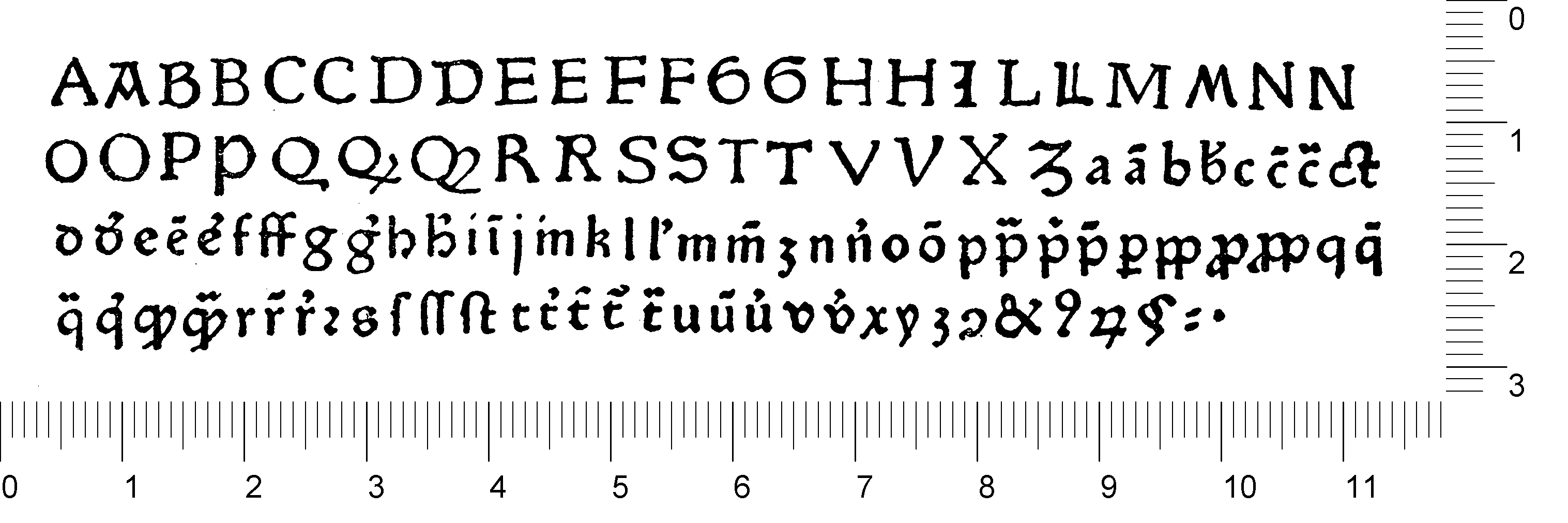
Johann Mentelin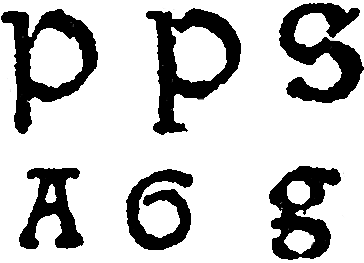
Mentelin, 1473. Letters of note:
P with descender; forms with and without bilateral serifs; Gothic rotunda S; A with broad top bar; spiral-form Uncial G; g with loop or lower lobe extending thorough link.
On Johan Schott’s claim, see A Bibliography of Printing, vol. 2, p. 37
While Günther Zainer was first printing in roman types in Augsburg, Johann Mentelin, Strasbourg’s first printer, cut a roman type with some very distinct letterforms, influenced by uncial and gothic forms. Menetelin, then, is one of the very earliest printers outside of Mainz, and likely was apprenticed with Gutenberg or Fust and Schoeffer for a time before settling in Strasbourg, where he gained citizenship. One of Mentelin’s daughters, Salome, later married the R-printer, Adolf Rusch, who took over the press upon Mentelin’s death in 1478. His grandson, Johan Schott later made the unsubstantiated claim that his grandfather, Mentelin, was the inventor of the art of printing.

Günther Zainer
Augsburg’s geographical position with easy access to Alpine trade routes connecting Northern Europe to the Mediterranean and its proximity to important silver mines helped it develop into an important center of banking and commerce. North of the Alps, Augsburg too was one of the first centers of humanist culture. Therefore, it is no surprise that it was in Augsburg that Günther Zainer, who had likely worked with Mentelin in Strasbourg, introduced roman type as early as 1472. His peculiar A and H make for easy identification of his type.

Dutch Type by Jan Middendorp, pp. 12–32
Post-Incunabula & their Publishers in the Low Countries, 1978, Vervliet
Romans in the Low Countries
There are very few incunabula books printed in the Low Countries* in roman, despite the region’s relatively early adoption of the printing press in the early 1470s, simultaneously at Utrecht and Alost. Nicolaus Ketelaer and Gerardus de Leempt, in Utrecht, were the region’s proto-typographers; by the 1480s, presses were established in at least twenty† towns throughout the Low Countries. One rare example is a roman of Johannes de Westfalia printing in Louvain.‡
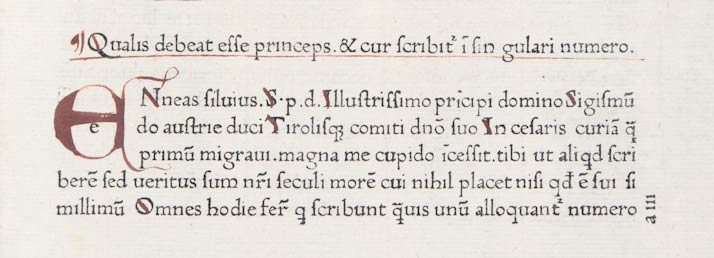
After some short-lived experiments with roman, during the last half of the fifteenth century, the output of the Low Countries was predominantly grammars and liturgical books. There are linguistic and cultural grounds behind the absence of roman types; for example, for the latter, the delayed influence of the Italian Renaissance and of Renaissance humanism§ – not felt until the subsequent century, with, for instance, the press of Dirk Martens (friend to Erasmus) in Antwerp, and who Vervliet terms, “the Low Countries humanists’ printer par excellence.”#
The Early Printers of Spain & Portugal, Konrad Haebler, 1897; and Monuments of the early printers part IV: Spain and Portugal; northern and eastern Europe; America, and the East, Bernard Quaritch, 1819–1899
Iberian Peninsula
Printing was introduced into Spain about 1472. Three of the earliest books to emerge from the first Spanish press of Lambert Palmart are printed in roman type (Type 1:103R). Thereafter, the vast majority of Spanish incunabula (around 1,000 editions) employ gothic types.
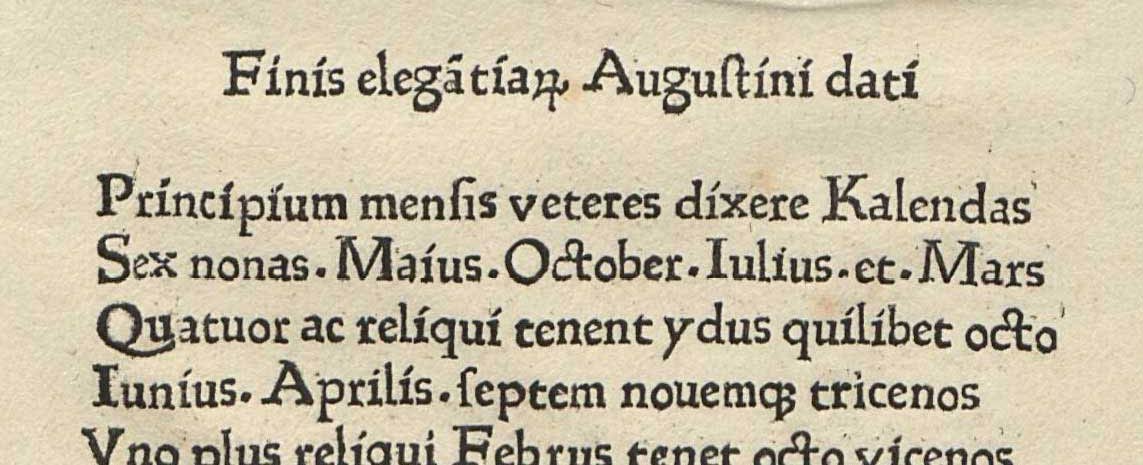
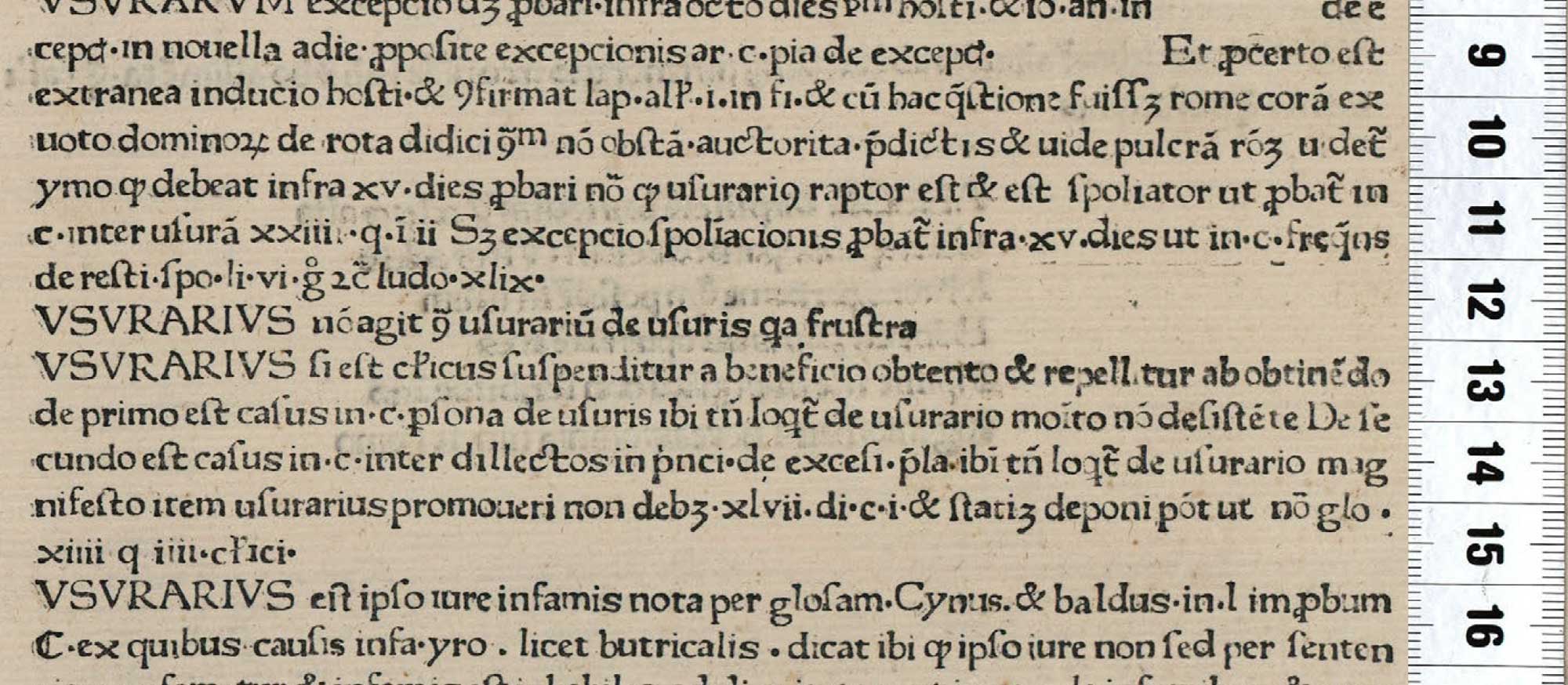
Venetian Romans
The Brothers da Spira
Not only was Venice home to a cosmopolitan and literate population, it was a commercial center, and a base for numerous companies that traded internationally. Its geographic position with good overland trade routes across the Alps into Germany and beyond, and its position as a maritime power with extensive sea-trading routes made Venice particularly suited for the printing and distribution of the printed book.
Printing was introduced to Venice in 1469 by two German immigrants, the brothers Johannes and Vindelinus da Spira. Johannes applied for a printing privilege, fundamentally a monopoly privilege. It was granted in 1469 and was to extend for a period of five years. Not only did this privilege grant him monopoly rights for printing in Venice, but precluded the importation of books from outside the Venetian territories. Unfortunately, for the brothers, Johannes died just months after being granted the potentially very lucrative privilege. As the privilege was granted in Johannes’ name, it apparently lapsed upon his death.
Had Johannes lived on, then perhaps the history of early printing would have taken quite another course, at least geographically. Or perhaps, the Venetian collegio would, upon seeing the potential for the new art, not have strictly enforced it. We do know that they most certainly had the power to revoke such privileges. If the privilege had remained in place (until 1474), then men like Jenson, Valdarfer, and Renner might have established their presses elsewhere in the Italian peninsula.

Ratdolt & Co.
After a dispute with his brother in Augsburg, Erhard Ratdolt, who had spent some time in Mainz as a youth, set off for Venice, arriving there no later than 1476. He partnered with two of his countrymen, Bernhard Maler and Peter Loslein. Following the pattern of many early printers in Italy, most of Ratdolt’s early output was in the classics. However, his debut edition was not the prose of Cicero or the poetry of Virgil, but of a contemporary author, the brilliant mathematician and astronomer, Regiomontanus (1436–1476). Regiomontanus had established his own press in Nuremberg, and in many respects, Ratdolt is his heir, printing many of the editions Regiomontanus had proposed to publish, before his untimely death in 1476. It is also likely that Ratdolt had learned his trade with Regiomontanus in Nuremberg. (Incidentally, his partner, Maler was a native of Langenzenn, a town just 25 kilometers west of Nuremberg.) This first book to come off their press was Kalendarium, a 55-year calendar (1475–1530) based on astronomical observations that would aid in the ecclesiastical calculation of, among other things, religious holidays.
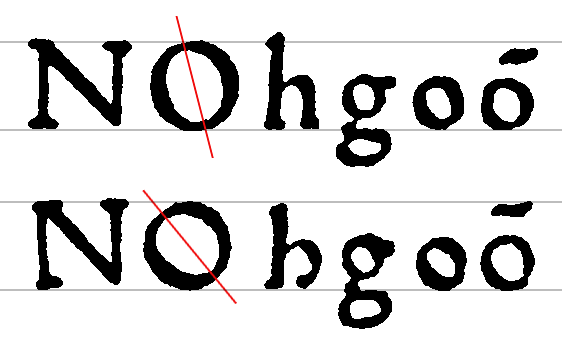
Top: Jenson’s Type 1:115R (1470); bottom: Ratdolt’s Type 1:109R (1476)
During his decade in Venice, Ratdolt printed with just one roman type in two variants (identical but for the form of d and the addition of several other sorts). Ratdolt does not follow Jenson in the form of h, opting instead for the the uncial form with bowed leg. Y with looped tail is a curious addition. Besides these features, Ratdolt’s capitals are just a tiny fraction taller than his lowercase letters with ascenders, and the axis of rounded letters is approximately 45°.

On April 1, 1486 Ratdolt printed the first known type specimen, his Index characterum diversarum, a broadside, printed on one side and measuring 340 × 220 mm. It features fourteen fonts in all: ten gothic, three roman, and one Greek font. The only surviving copy is at Bayerische Staatsbibliothek in Munich, Germany. The type specimen wasn’t discovered until the late nineteenth century, hidden away in the binding of another book in Munich. It may also indicate that Ratdolt was in the business of selling type, though perhaps it is simply an advertisement for his new Augsburg press.
Nicolas Jenson
Nicolas Jenson was born in Sommevoire, north-eastern France, in about 1420. He worked his way from apprentice to Master of the Royal Mint at Troyes. The nineteenth-century historian of incunabula, Anatole Claudin, claims that Jenson was, on October 4, 1458, sent on a secret mission to Mainz, where he would learn the secrets of printing and bring bring that knowledge back to France. While in Mainz, Charles VII died (1461) and, according to one account, Jenson decided to stay on at Mainz. Whether Claudin’s account is accurate does not really matter. What does is that Jenson learned how type was made – a process that would certainly not have been entirely alien to him, in view of his familiarity with die-cutting and casting at the Royal Mint.

Daniel Updike wrote that Jenson’s roman types “have never been equaled,” and that “no other man produced quite so fine a font.” It is undoubtedly a fine type and its influence is inestimable. That it was the finest roman of the time is a fair opinion, but “the best roman ever” – nonsense, of course.
* Interesting is Martin Lowry’s take on other factors contributing to the downturn of 1473. See Nicolas Jenson & the Rise of Venetian Publishing in Renaissance Europe, 1991
† ISTC lists just one. GW lists two: a classical work, Solinus’s De mirabilibus mundi (‘The wonders of the world’) and a book of decretals (canon law)
During the first decade of printing in Venice, the year 1473* stands out for a significant drop in the number of editions published. From 1470 to 1472, Jenson published over thirty editions, but 1473 sees just two.† This significant fall in production is invariably attributed to the overproduction of Classical texts in the preceding two years during fierce competition between Venice’s top two firms headed by Jenson and, Johannes de Colonia (John of Cologne), and whose output in those years accounted for half of total Venetian book production. Moreover, there was considerable overlap in the publishing programs of the two competitors. A contemporary scribe complained that Venice was “stuffed with books”, though his consternation is likely, at least partially, fueled by sour grapes.

Nicolas Jenson & the Rise of Venetian Publishing in Renaissance Europe, Martin Lowry (1991)
A number of manuscript models have been proposed for Jenson’s roman types. Although, no single manuscript hand served as an exemplar, many cite the script of Battista Cingulano – for his letterforms and certain abbreviations, that are common to both Cingulano’s script and Jenson’s type (See Lowry, 1991, pp. 80–81).
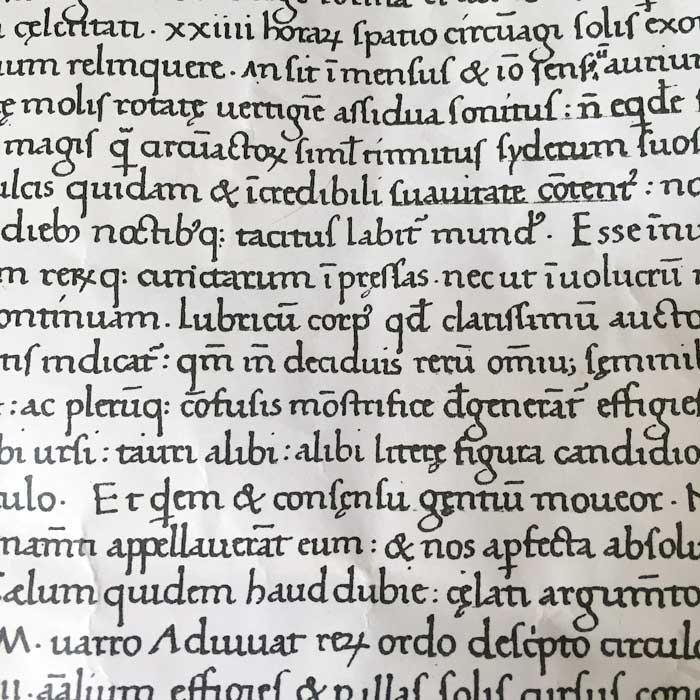
Facsimile of Battista Cingulano’s script, c. 1450, that likely served as a model for Jenson’s romans. From Lowry, 1989, p. 20
Jenson’s Last Will & Testament bequeaths his types to his business partner and friend, Peter Ugelheimer. Ugelheimer’s widow, Margarita, continued his publishing business after his death, even commissioning Aldus to print St. Catherine’s Letters in 1499, incidentally, the very first book printed with a very small sampling of his italic type, used proper in the following year. From 1482, we see Andrea Torresani, later father-in-law of Aldus, printing with one of Jenson’s gothic rotunda types, one that Jenson had used from 1477 to 1479, mostly for works of civil and canon law. Perhaps Ugelheimer had sold the types to Torresani prior to moving to Milan.
Romans for Romans
Roman type was simply a reflection of the genre of books in which they appeared. Jenson would no more have printed a liturgical book in roman, than a printer of liturgies would print one with gothic types. Why? For the same reason that twenty-first-century newspapers set in gothic Fraktur types don’t sell. A decline in the number of classics, most notably from 1473, is reflected by a concomitant fall in the number of roman types produced. Though Lowry suggests that Jenson’s early classics, printed exclusively in roman types, were something of a commercial failure*, it would be wrong to blame the romans. Compared to Jenson’s publishing program thereafter, one might rightly deem his early classics as a relative financial failure, but there is nothing to suggest that he had any difficulty selling them, prior to 1473. When the market had become saturated with editions of the Classics, he wisely shifted his focus to large and expensive folio editions of canon and civil law (a genre that had proven lucrative for Ulrich Han in Rome); and a category of books that had, traditionally, in southern Europe, been produced in formal gothic scripts like rotunda. Therefore, if Jenson’s early works of the classics were indeed a “commercial failure”, then it is a failing, not of the types, but of the genre he chose to print.
Between 1473 and 1476, five Italian presses experimented with law books set in roman types, but thereafter no books of civil or canon law were produced with roman types. (See Hirsch, p. 114) Of those ten editions, produced in Rome (7), Ferrara (2), and Perugia (1), all were folio editions of civil rather than canon law, and the relatively small number of surviving copies suggests that they were not printed in large numbers.
During the fifteenth century, Italy, led by Bologna, Milan, Rome, and Venice, dominated the market for law books, producing two and a half times as many as the rest of Europe.

Jenson’s shift away from roman types to gothic has little, if anything, to do with letterforms, and everything to do with genre. Jenson’s abandonment of roman types is more accurately an abandonment of the classics, for which roman types, at least in Italy, were the natural choice. Especially after 1476 we witness a marked shift in Jenson’s publishing program – away from the classics to Jurisprudence and religious works. Something that Vindelinus de Spira had already started doing. In 1477, Jenson published seven editions, all set in gothic types: three religious works, including a Papal Bull in German, and Aquinas’s Summa theologiae; and four works of Jurisprudence, including one of canon law, Decretum, by the twelfth-century Bolognese lawyer, Gratian. And all but the Papal Bull were large format folio editions. Jenson’s only use of roman types after 1476 – once in 1478 for a two-volume Plutarch, and once in 1478 – were for works likely “commissioned by outside patrons rather than planned by Jenson himself.” (Lowry, Venetian Printing: Nicolas Jenson and the Rise of the Roman Letterform, 1989, p. 23.)
In 1474, Jenson partnered with two Frankfurt businessmen, Johannes Rauchfas and Peter Ugelheimer to form Nicolas Jenson et Socii. Five years later, in 1479, we witness yet further consolidation with a new merger to form Johannes de Colonia, Nicolas Jenson et Socii. However, this partnership proved to be short-lived owing to the deaths of both of its principal partners, Johannes de Colonia, who died shortly before the merger was formalized, and Jenson who died in September, 1480.

Although Jenson’s type was often imitated, there are few that rival it. Of the hundreds of romans between Jenson and Aldus, one of my favorites is Type 5:95R by Francesco del Tuppo, one of the – if not the – first printer at Naples. Good, classically proportioned capitals, but for wider B, E, and S, and a marginally slimmer N.

And another fine roman, this time from Perugia, and later used in Florence:
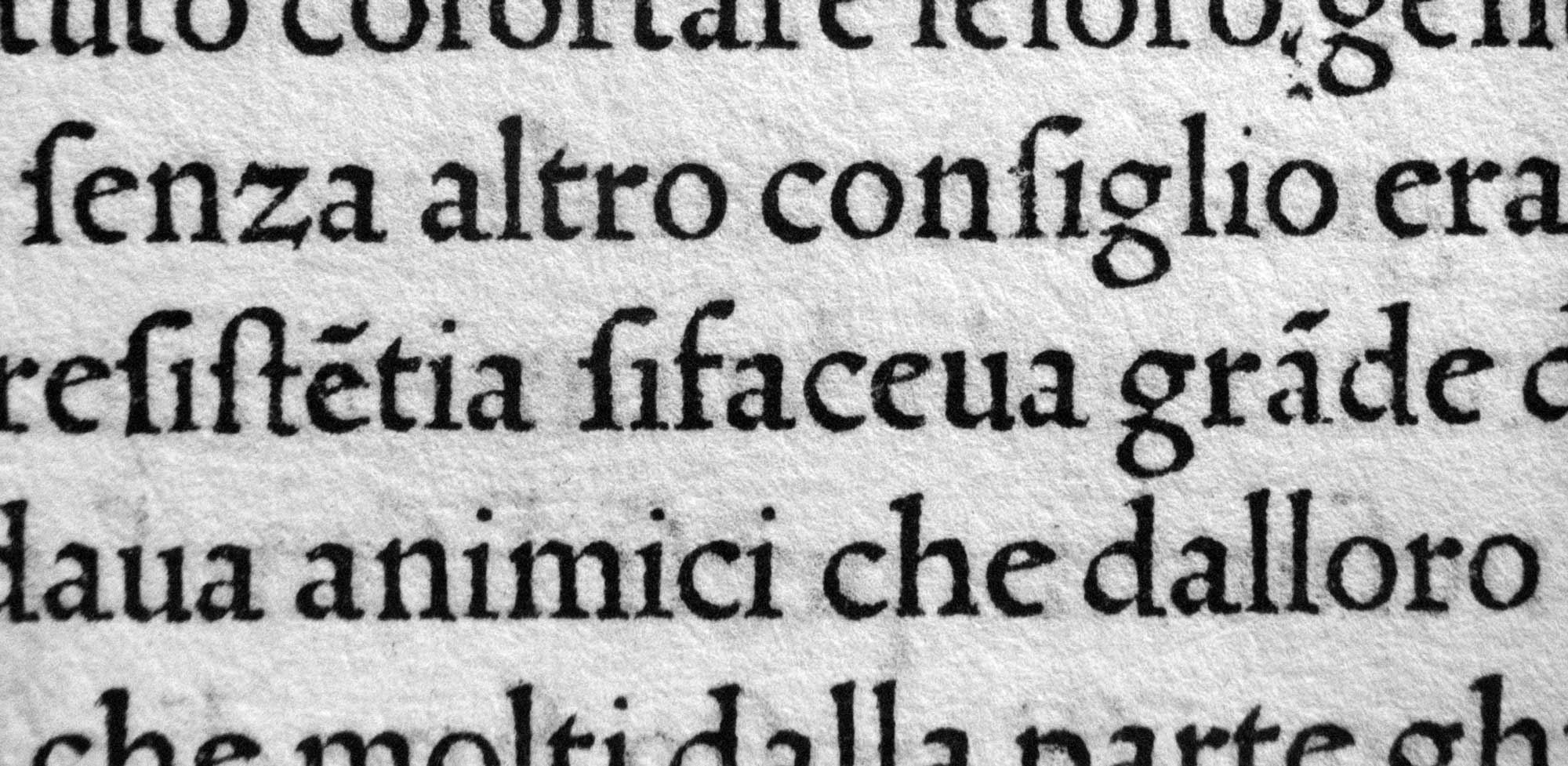
And this lovely sharp, angular Italian roman from the early 1480s, with some of its rhythm attributable to the repetition of angles in, for example, the crossbar of e, head serifs, and even the ear of g:
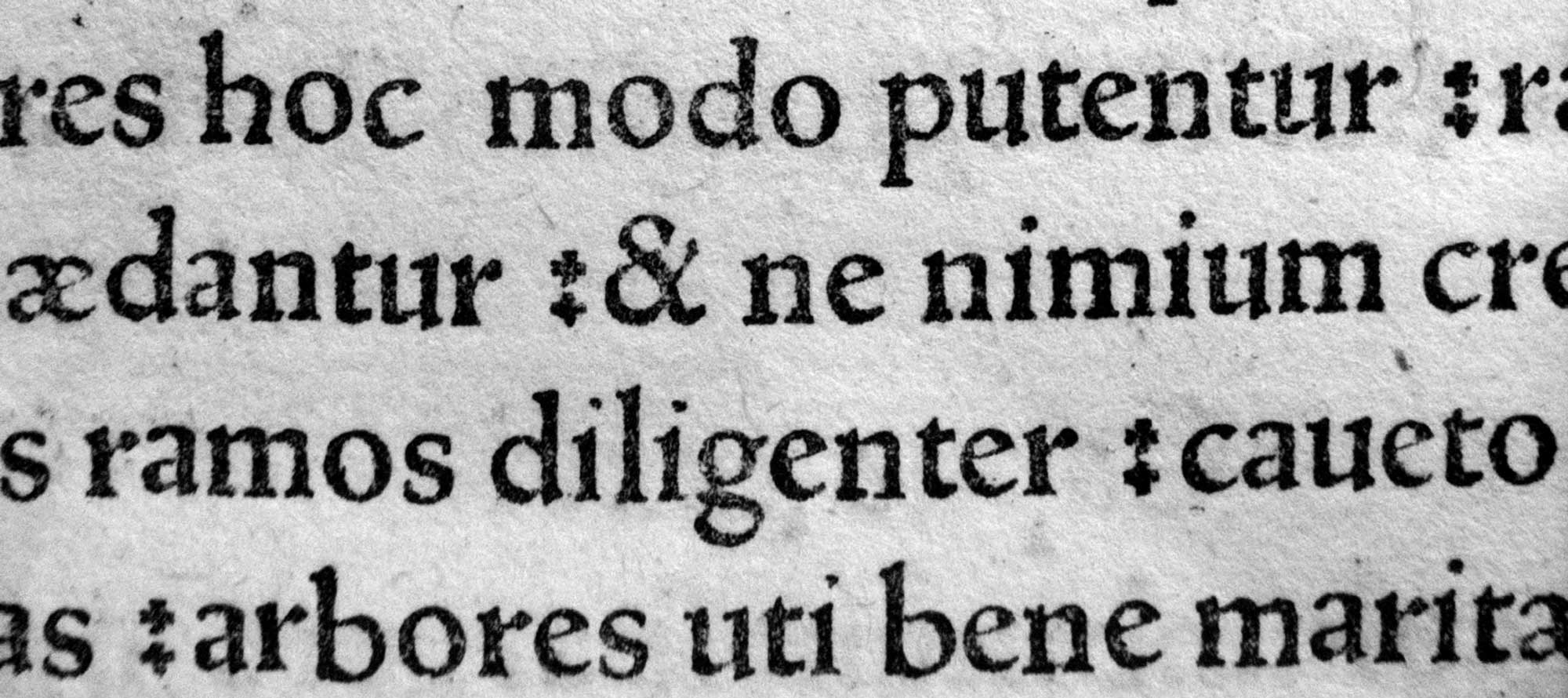
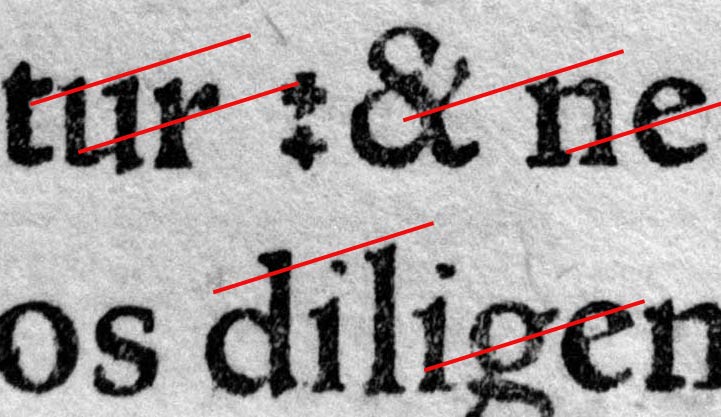
Rhythm through repetition
After the tumultuous events in Mainz of 1462–63,* Claudin claims that Jenson left along with Sweynheym and Pannartz, and the da Spira brothers. He also suggests that Jenson had cut the first roman of the Subiaco press. Updike† even credits Jenson with the roman of the da Spira brothers in Venice. This does coincide with a gap in Jenson’s story of a half-dozen years between his last known appearance in Mainz and his arrival in Venice. However, besides Claudin’s account, written in the nineteenth century – and he cites no corroborating sources – there is no evidence beyond the circumstantial; though his account is not entirely implausible.
Peculiar Early Romans
Although Jenson’s roman would come to influence printed roman letterforms for centuries, their adoption was by no means immediate. The first roman of Johann Neumeister, the first printer at Foligno, Italy, from 1470, bears little resemblance to other early Italian romans.

We can only assume that the anonymous punchcutter behind this roman of 1472 was promptly fired and banished from Germany. Although, to be fair, it was his first (and last) effort.

The First Paris Press; an account of the books printed for G. Fichet and J. Heynlin in the Sorbonne, 1470-1472, A. Claudin, 1898. Read at archive.org
Early French Romans
Prior to the establishment of the first French print-shop, Fust and Schoeffer via their representative, Hermann Stabeon, supplied many editions to the French capital and beyond. In fact, it was in Paris, while Fust was visiting the city with a consignment of books, that he died in 1466, probably of the Plague that ravaged Paris during 1464–66, claiming some 40,000 souls. His partner, Peter Schoeffer had attended university in Paris before apprenticing to Gutenberg in Mainz. Printing in France got its start in Paris in 1470. Ulrich Gering, Martin Crantz, and Michael Friburger, three Germans, were invited by the university’s prior, Johann Heynlin and Guillaume Fichet, former rector, and then librarian of the Sorbonne. Although the press has sometimes been called the first university press because it was set up in the buildings of the Sorbonne, it was never sponsored or funded by the university, but privately by Fichet. The three German invitees are merely extras in the story of the Sorbonne press. Fichet and Heynlin are the protagonists: Fichet, who since his youth, had profited from the generosity of his benefactor, Cardinal Rolin, Bishop of Autun in Burgundy, was the financier; Heynlin was the director. Again, in our story, we see Cardinal Bessarion, a friend and benefactor of the mathematician and one of the first printers at Nuremberg, Regiomontanus, connected to Fichet via his benefactor, Cardinal Rolin.
The first two books issued from their press were works by the Italian grammarian, Gasparino Barzizza: Epistolae, a collection of his letters intended to serve as exemplars of correct Latin style; and Orthographia, a manual of Latin orthography. The roman type cut for these books (Type 1:116R) is, according to historian of the Paris press, Claudin, based on Sweynheym and Pannartz’s second roman type (Type 2:115R) – Heynlin’s library of 300 volumes included a Roman edition of Sweynheym and Pannartz. The capitals, though generally of the same proportions are a fraction taller than those of the Sweynheym and Pannartz Rome type. In the lowercase, the Sorbonne type is, for most letters, fractionally wider.
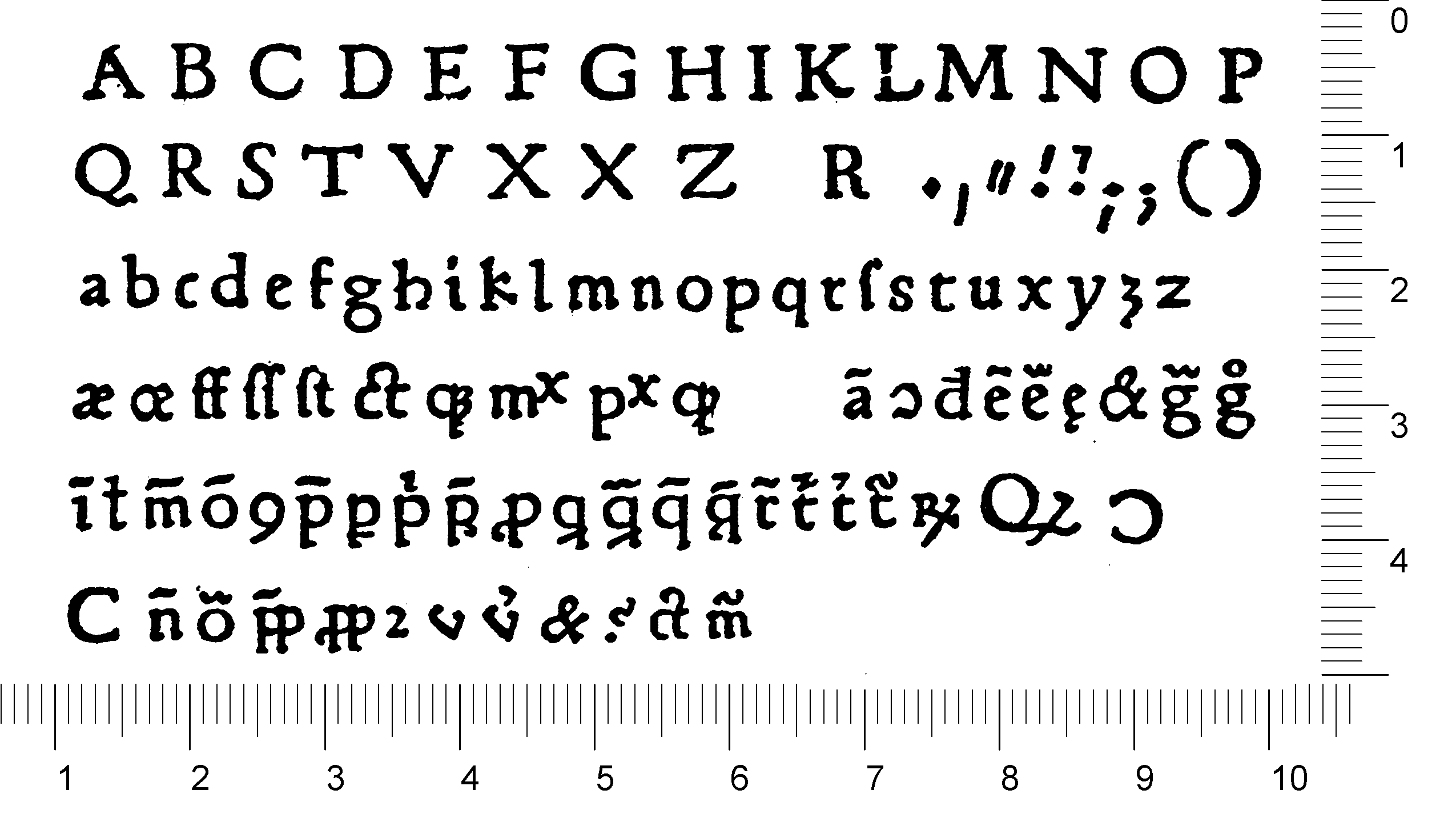
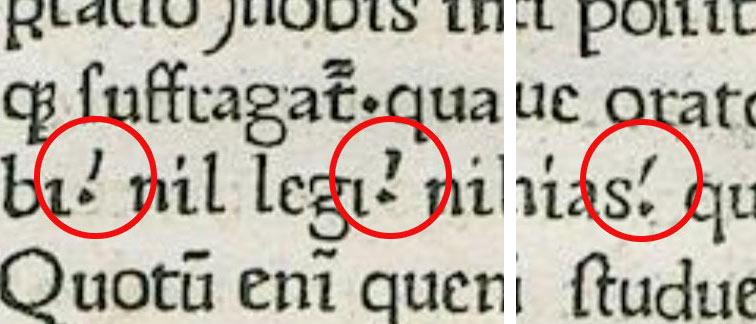
* Unusual marks of punctuation in Gering & Co.’s first roman. Perhaps forms of punctus elevatus denoting a short pause
Perhaps it is no coincidence that the roman font used for these books, in particular the book about orthography – among other things, correct punctuation – should contain punctuation marks that are so remarkably emphatic (large); the two marks of punctuation that resemble an inclined question mark and exclamation mark are curious additions to the font. I have thus far been unable to identify their function, though in transcriptions of the Latin, they are often rendered as commas, or passed over entirely.*

Type 1:116R by Ulrich Gering & Co. Alternate forms of R (1470)
In 1473, Crantz and Friburger return to Germany, but Gering remains in Paris with a press of his own. Gering’s later roman type of 1478 led a particularly long life, appearing in use as late as 1529, in an edition of Ambrose’s Omnia opera, printed by Claude Chevallon in Paris (USTC: 146072; See also Vervliet, pp. 62–3, 125). Gering was also the first to print Gothic types in France, in 1473. For the following three decades the Paris presses printed predominantly in gothic. Also in 1473 a press was established in Lyons, though not yet a university town, it was a major commercial hub. By the close of the fifteenth century Lyons would become Europe’s third most active center of book production in Europe, after Venice and Paris. However, roman type was not used in Lyons until the last decade of the fifteenth century, with the press of Jean Du Pré.
Certainly Gering’s most curious type (Type 3:115G) is something that surely must best be described as semi-roman or semi-gothic. First employed around 1473, after departing the Sorbonne press, for a folio edition of thirteenth-century philosopher and theologian, Duns Scotus’s commentary on the Sentences of Peter Lombard (ISTC: id00376000), it combines roman capitals with a gothic rotunda lowercase.
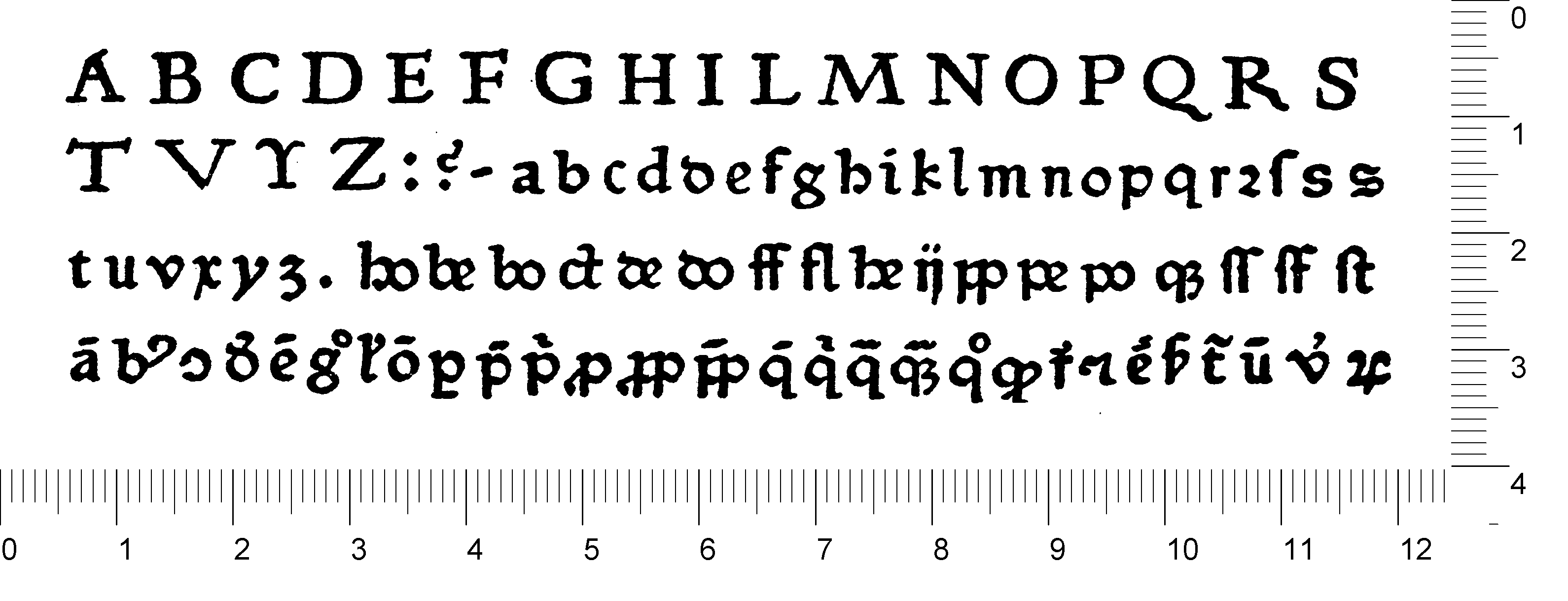
In Italy from the the early 1480s, we witness what Scholderer terms, “the end of alien tutelage.” Since the introduction of print to Italy, by two German immigrants, the printing trade had been dominated by their fellow countrymen, and by other foreigners like Jenson. However, roughly coinciding with Jenson’s death in September 1480, more native Italians establish presses.
Aldus Manutius: Printer & Publisher of Renaissance Venice, Martin Davies, 1999
Aldus Manutius
Born in Bassiano, some 80 kilometers south of Subiaco, Aldus Manutius is perhaps the best-known figure of early printing. He arrived in Venice at the end of the 1480s, spending a half-dozen years preparing for his publishing venture, gathering manuscripts, securing financial backing, and familiarizing himself with the business of printing and publishing. Prior to printing himself, he commissioned Andrea Torresani (also Andreas Torresanus), formerly associated with Jenson, to publish his own work, Institutiones grammaticae, a Latin Grammar (1493). In addition to Aldus’s italic and Greek types, his romans are also remarkable. The first, cut by Griffo in 1495, is a type that would not look out of place in a twenty-first-century book.
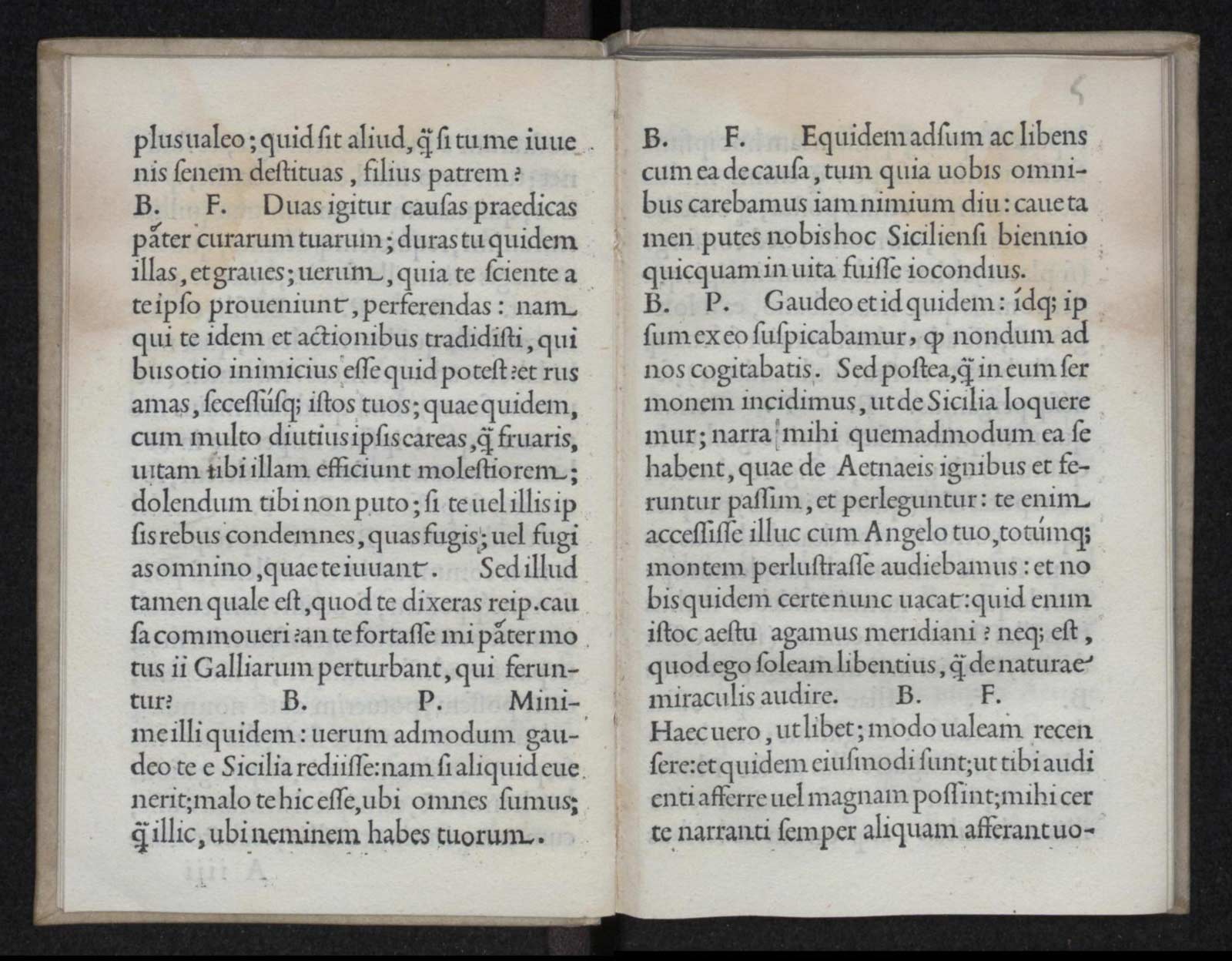
But not everyone has been quite so effervescent about Aldus’s achievements. In 1950, former rare book curator at the Pierpont Morgan Library, Curt Bühler, wrote:
“Aldus was not a great printer in the sense that Nicolaus Jenson or Erhard Ratdolt, or even his own father-in-law, Toressano, were masters of the art & technique of book-making. His presswork was indifferent and his types poor.”
Although a fairer assessment was made by Raymond Roberts:
“An examination of [the 1495] Bembo… shows many characteristics common in a Venetian roman design, but the over-all effect of the type is one of much greater regularity, consistency, and precision than any Venetian type possesses. The main vertical strokes are of even thickness, the serifs are no longer cupped, while many of the terminations of the letters are softer or rounded. In addition, the rather shallow brackets of the Venetian style are replaced by much more pronounced curves, and the terminations of the serif strokes are considerably sharper, or even pointed.”

The Aldine Hypothesis
The historian Daniel Updike claimed that the Aldine roman was “distinctly inferior to Jenson’s.”* For a superb overview of the Jensonian vs Aldine romans, see Kay Amert’s Stanley Morison’s Aldine Hypothesis Revisited.

In one corner, we have William Morris, Daniel Updike, and Bruce Rogers; in the other, Stanley Morison, who claimed the Aldine roman to be superior. It is Morris and the Private Press movement that are most responsible for Jenson’s apotheosis.

All Romans Great and Small
On average, most fifteenth-century romans measure about 100–115 mm for 20 lines, with x-heights of approximately 2mm. Sweynheym and Pannartz’s first roman has an x-height of 2mm. Jenson’s Euseibius roman, 2.2 mm; the Aldine ‘De Aetna’ roman, 2.3 mm. Of the smaller romans, Johann Amerbach’s Type 24:75R in Basel, produced in 1494, has an x-height under 2 mm. For comparison, Monotype Bembo & Requiem Text printed at 16pt have x-heights of 2.3 mm; Adobe Garamond, an x-height of 2.2 mm.

But perhaps the record for the smallest fifteenth-century roman goes to Type 23:64R of Johann Grüninger in Strasbourg, with an x-height just a shade over one millimeter. It is accompanied by a gothic type, that is even smaller, Type 4:52G.
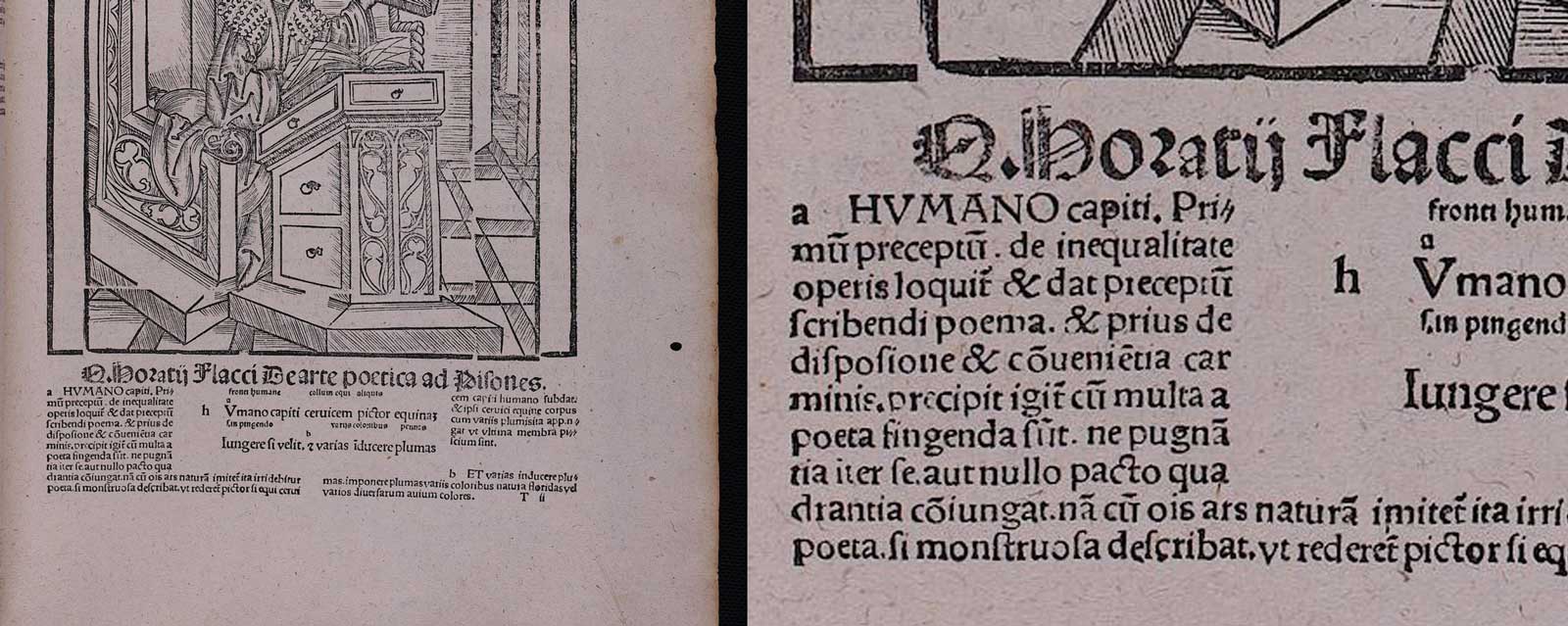
One of the largest fifteenth-century romans (discounting woodcut initials) is a type produced by Ratdolt for a single edition of 1505 (USTC: 691414); a beautiful little book, Conrad Peutinger’s, sylloge or anthology of ancient Roman inscriptions that Peutinger had discovered in and around Augsburg. This remarkable little book, of just sixteen pages, Romanae vetustatis fragmenta, is the first printed reproduction of the Roman lapidary inscriptions. Ratdolt had 8 mm capital letters cast (larger than almost any other known roman). The Latin poem on the last page was recited to the Emperor Maximilian by Peutinger’s daughter, not yet four years old.
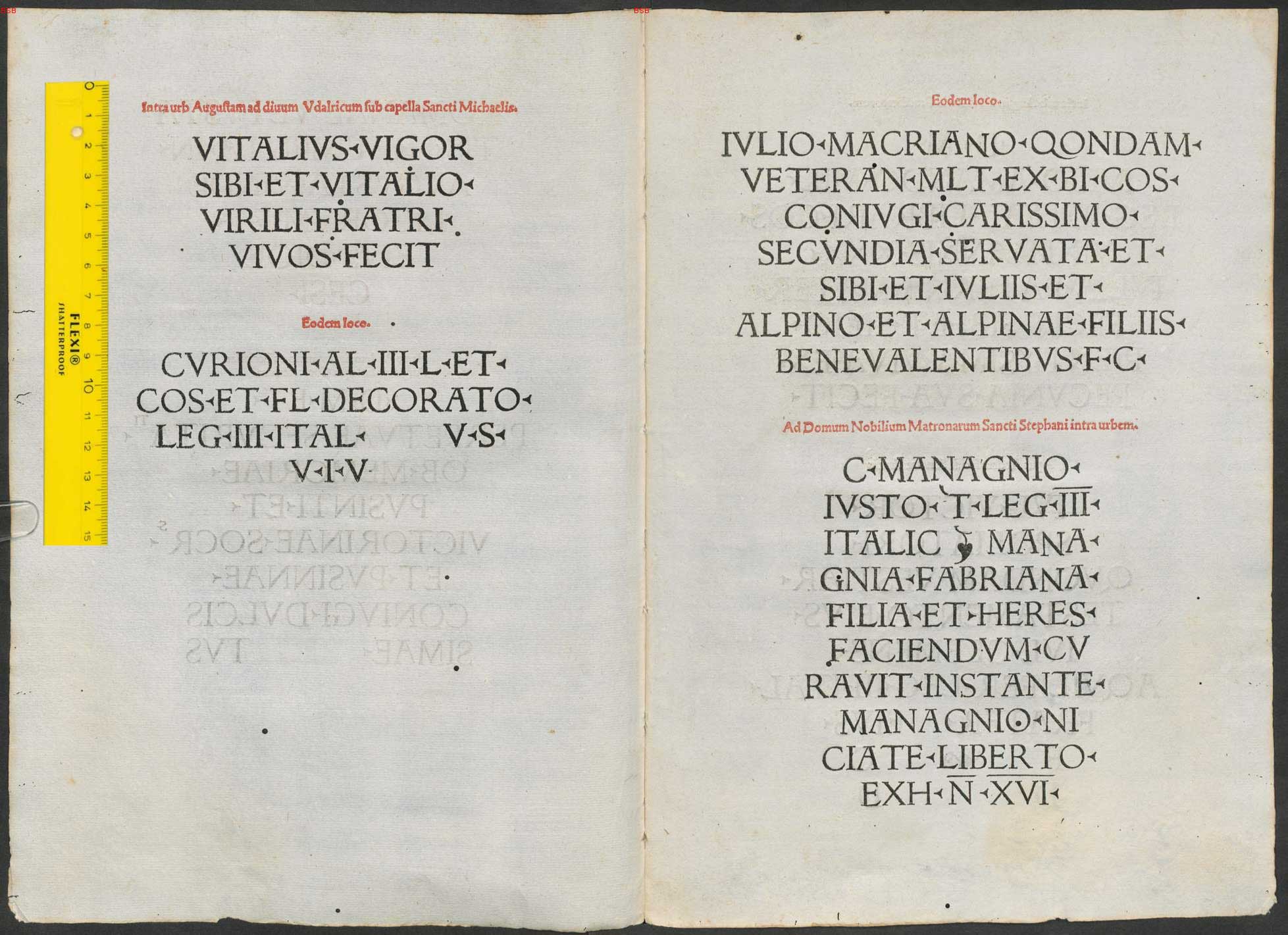
Early Sixteenth-century Romans
The study of incunabula ends somewhat arbitrarily in the year 1500. But some of the most important and formative details of the early history of roman type extend beyond this cutoff to the work of the great early sixteenth-century punchcutters, like Claude Garamont.
For most of the fifteenth century printers produced their types in-house, with the punches, matrices, and types themselves seldom changing hands, but for the death of the printer or closure of the print shop. However, towards the end of the century we begin to witness greater mobility of types, as type production (typefounding) came to be established as a separate business. For example, at the beginning of the sixteenth century, the type (Type 4:80R) of Paris printer Jodocus Badius appear in Germany and Italy (Vervliet, p. 24) The story of these early sixteenth-century romans will be the subject of a future ILT article.
Making an Impression
One downside of the facsimile alphabet specimens presented in this article is that they reproduce just one state of the printed type. In letterpress printing, each time the inked type meets the paper, its impression is unique. The texture or tooth of the paper, the dampness of the paper, the viscosity of the ink, evenness of the inking, age of the type, and the composition of the type metal are all factors contributing to the form of the type on the printed page. This variation in the minutiae is one of the most endearing qualities of letterpress, but those same variations obscure the true or original forms of the type.
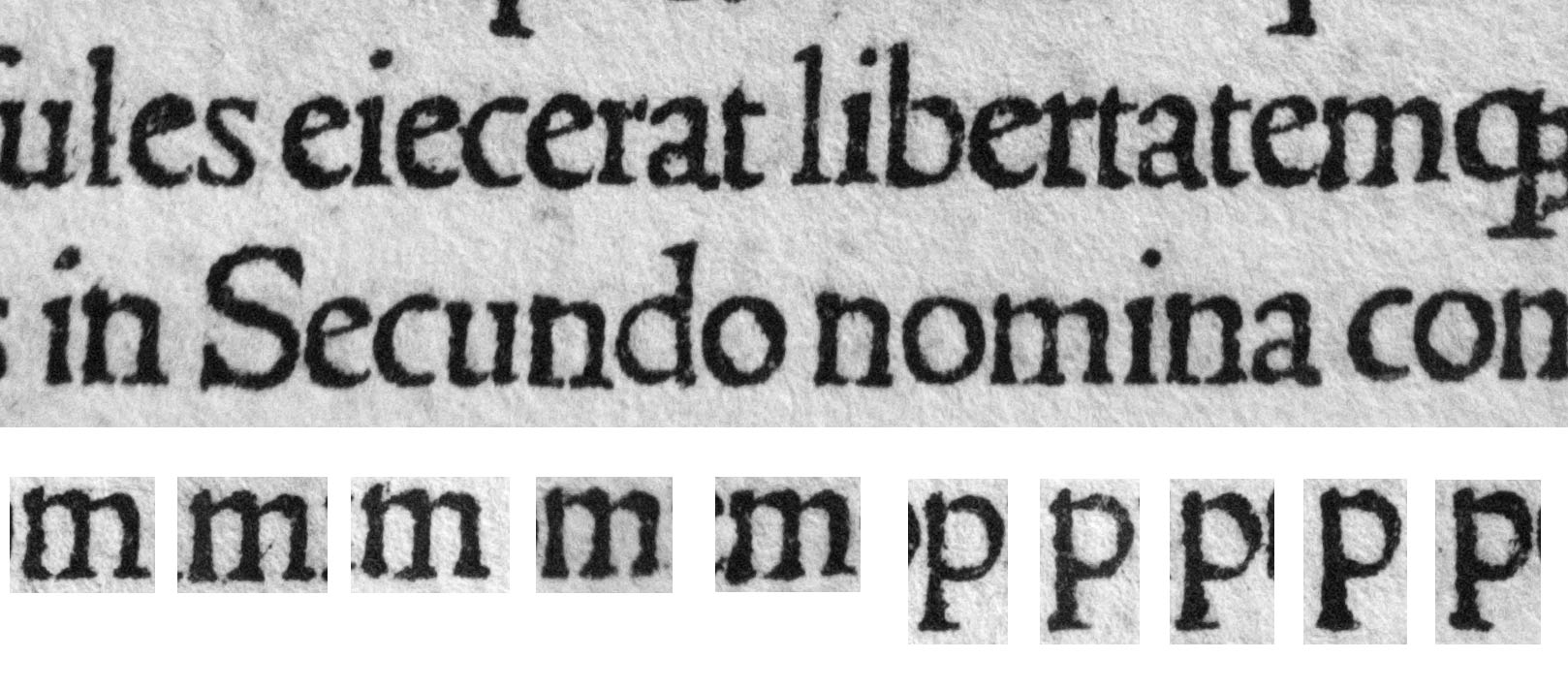
Ink spread might transform slab serifs into bracketed serifs, while other sharp corners and transitions become rounded, and junctions blurred or softened. Without access to the original type, punches, or matrices, it is difficult to determine the precise letterforms as conceived by the the letter designer or punchcutter. Each printed letter, therefore, is quite literally an impression or interpretation of the the archetype, the physical piece of type metal – a kind of typographical-Platonic modes of forms and appearance. The true form of any letterform can only be determined by analyzing many impressions of the same letter, ideally with a loupe or from high-resolution photographs.

Top: Jenson (1470); middle: Aldus (1495); bottom: e with ‘nib’, Petrus Adam de Michaelibus (1472).
* Prior to Aldus’s roman, there appear to be just four roman types with a horizontal crossbar in e: Type 1:116R by an anonymous printer in Venice (1471); Type 2:84R by Andreas de Bonetis in Venice (1480); Type 4:86R by Adam Rottweil in Aquila (1482); & Type 1:113R by Philippus de Lavagna in Milan (1471);
† 70% of all incunabula were printed in Latin
Roman Letterforms
Throughout the evolution of the roman minuscule we witness its gradual harmonization with the majuscule alphabet. These two alphabets were conceived almost a thousand years apart. It is perhaps an accident of history – the Caroline minuscule was mistakenly attributed to Antiquity – that brought the two alphabets together. And although the minuscule letterforms evolved from their capital counterparts via uncial, half-uncial, through Caroline minuscule and the humanistic book-hands, it was to be in letters cut in steel, punched into copper matrices and cast in lead that they would be immortalized.
The evolution of individual letterforms is not linear, but branching, where experiments with their form disappear altogether, or find their way through will or happenstance into the typographic canon. A great deal of their early evolution is rationalization of form: the gradual departure from calligraphic detail and variation. Calligraphic details like the hooked terminal are replaced by bilateral serifs. Overall, serif structure, contrast, and stress are treated more consistently. For individual letters, the crossbar of e transforms from oblique (sometimes with the addition of a nib) to horizontal. I had always assumed that Aldus was the first to introduce this form of e. However, after too many hours spent poring over hundreds of specimens of fifteenth-century roman types, I found four other examples: Three from the early 1480s, and a fourth from 1471.* After Jenson, straight-leg h soon became the most common form. By the close of the century it was the normative form. However, there are four roman types prior to Jenson that include h with straight, rather than bowed leg. We also witness a steady decline in the use of contractions and abbreviations, coinciding with the decline of Latin† and the rise of vernacular tongues, (later accelerated by the Reformation), and greater standardization in the design and form of punctuation.

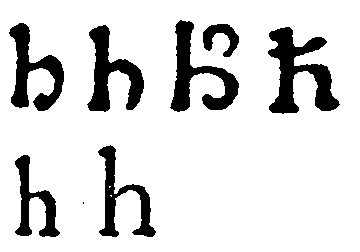
Pre- and post-1470 forms of h
From the second quarter of the sixteenth century, roman types, hitherto reserved almost exclusively for classical and humanist literature, began to make inroads into those genres that had traditionally been printed in gothic types. Especially from the 1520s in Paris, we witness books of hours and even Psalters set in roman types.
Two Latin alphabets inspired by both antique and medieval antecedents. Majuscules first incised in stone more than two millennia ago, married to minuscule letterforms that evolved from manuscript hands of the eighth and ninth centuries. The Carolingian or Caroline minuscule joined forces with antique Roman square capitals at the very beginning of the fifteenth century* – a conjunction willed by the great Florentine humanists; their forms first wrought in metal by two German immigrants at Subiaco and Rome, honed by a Frenchman, and consummated at the hands of Griffo of Bologna and Aldus the Venetian. A thousand years after the fall of the Roman Empire, the romans returned and re-conquered – yet another thing the Romans have done for us.
Acknowledgements
Icons by Linearicons.
Header image: Painting of the great Italian mathematician, Luca Pacioli [by Jacopo de’ Barbari, 1495].
Thanks to Alec Julien for help in tracking down a rare book.
Thanks to Lars Schwarz for help in collating some of the GW & TW data sources.
And thanks to Dr. Paul Dijstelberge, of the University of Amsterdam, for providing exceptional high-resolution photos of many fifteenth-century types.